In recent years, paracord has become a wildly popular staple of the prepping community-and with good reason. This incredibly durable material lends itself well to a number of different tasks. Increasing demand coupled with the creativity of the manufacturing community have created thousands of different ways for survivalists to tote this invaluable material, making it both easy to remember, and even fashionable to carry.
[the_ad_placement id=”in-text-1-type-r”]Here we’ll explore just what makes this magic rope so durable, and its numerous uses in emergency and everyday scenarios.
The toughest stuff
As most people know, we got our first introduction to paracord as a matter of necessity for the US military. We needed an ultra-strong, lightweight rope to support the tremendous amount of force exerted by the opening of a parachute, and something that could take the intense shock of all of that weight suddenly pulling against it without snapping.

So the parachute cord was born. Made up of several clusters of nylon fibers, this amazing innovation wouldn’t rot or mildew like other fibers would. Because it is woven out of so many small strands, it has a very smooth texture for its strength. This makes it excellent in applications where the rope needs to be able to move or glide very quickly, as in the opening of a parachute. In addition, its tensile strength is tremendous. Depending on the thickness of the cord, many can support up to 750 pounds.
In recent years in particular, the survival and prepping community has seen the potential of this material, and it has created a wildfire of an industry overnight for it. Several companies have begun producing everything from bracelets to leashes out of woven paracord that can be unwound when they’re needed. These innovative designs can pack several hundreds of feet into a practical application that can actually be used up until the point that it is needed for something else.
Paracord is also sold in bulk and by the spool in varying thicknesses, and of course, in a myriad of colors. Everyone from Amazon to hiking supple shops have started carrying the trendy fibers, no doubt appealing to the market of people that like to combine their practical prepping ways with a little fashion sense.
How to use a paracord bracelet
One of the most popular ways to buy your paracord these days is in the form of a woven bracelet. There are a slew of manufacturers out there now offering these in every color combination imaginable. With the trendiness taking hold, prices vary wildly; you can see these run anywhere from $5 to $500, depending on whose name is on the label (crazy as that may sound). Most of the bracelets have about 12 feet of paracord wound into them.
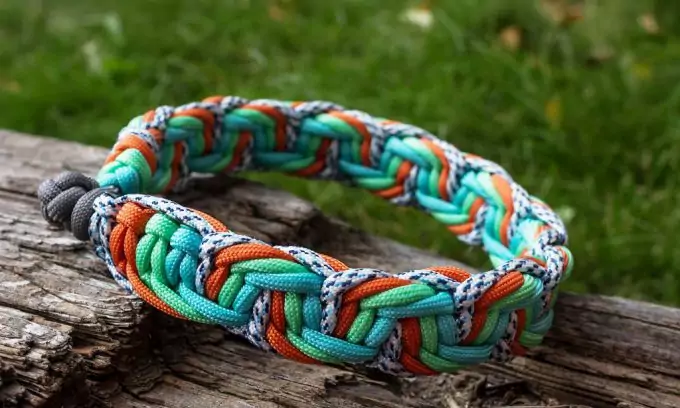
Depending on the model you get, you may be able to unwind yours without cutting into the cord. Many have loops or pins that you can pull to release and unwind the braid. However, it goes without saying, if you’re going to wear a paracord bracelet, you better wear a knife as well. Once unwound, there’s a lot you can do with one in an emergency scenario.
You can either buy a paracord bracelet or you can have a ton of fun making it yourself. We have a great step-by-step tutorial on how to make a paracord bracelet and we invite you to start practicing today!
First aid applications
Operating under the assumption that you only have one bracelet, and the average length of cord included in one is 12 feet, there are still a wide variety of applications in a first aid scenario. The first one that comes to mind is no doubt moving a patient from one location to another. As long as you can get the person on some sort of surface that will glide across the ground, you can rest assured that your paracord will be able to handle the job.
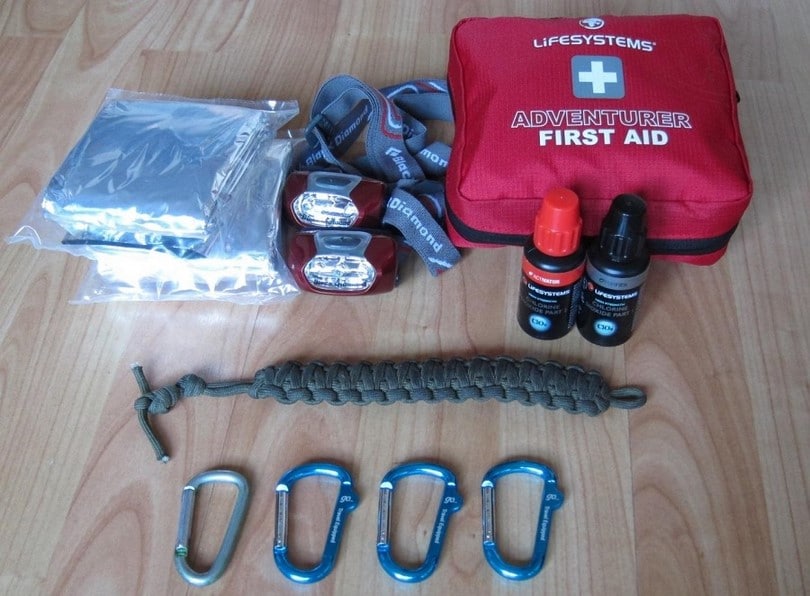
Most paracord bracelets are rated at at least 550, which means that they can support up to 550 lbs of tension. Once you have your patient on a makeshift gurney, create a toe loop, running the cord through both corners so the gurney doesn’t favor a side. Use something to pad where you’re going to do the pulling, as this stuff is strong and can wear into your hand pretty quick. Even just a wad of moss between you and the paracord will save your hand from some cramping.
[the_ad_placement id=”in-text-2-type-r”]Another very common field medicine use of these bracelets is as a tourniquet. Let me just start by saying the applying a tourniquet is not something you should ever do lightly-in the best case scenario, it should only be done by a professional. But as we all know, life just doesn’t go around passing out best case scenarios. That being said, before you even consider applying a tourniquet, ask yourself if the loss of the limb is an acceptable possible outcome, because that is likely what is to happen if it’s left on too long.
However, if someone is really seriously wounded, and you’re more worried about them bleeding out than losing an arm, start unraveling that bracelet. (This isn’t something I’ll tell you how to do here, since its better you read an entire book to understand the process. However, the point is, paracord is up to the task).
If you’re dealing with something like a broken arm or a sprain, these bracelets can also be deconstructed to secure splits and create makeshift slings (again, use anything you have available for padding between flesh and cord). Though not the most comfortable, the cord is certainly strong enough to hold a limb in place as it heals.
Of course, these are not the only emergency cases when paracord will prove useful. To learn more, take a look at our article on emergency uses for paracord.
Hunting and fishing
It goes without saying that this stuff is great for winging it when you’re fishing. Even if it’s not an emergency, and you’re just out fishing and forgot something, there are several different ways you can use your bracelet, and maybe avoid a trip back to the house.
For one thing, it makes an excellent gig. The bright colors these cords usually come in make it easy to spot, so you can gig up your catch as you pursue more upstream. Just find something in the water (out of a strong current of course) to secure your cord to, then run the other end of the cord through your fish’s gills, creating a basic hitch or slipknot, or even just a loop, depending on your person preference. There you go, instant live-well!
If you’ve just cut your last clump of knotted fishing line off, you can even use the inner fibers of your paracord to make a makeshift fishing line. Just use a lighter to melt the ends so they don’t keep fraying, and twist the fibers around on themselves a few times (melting in places to keep the fibers together, if needed).
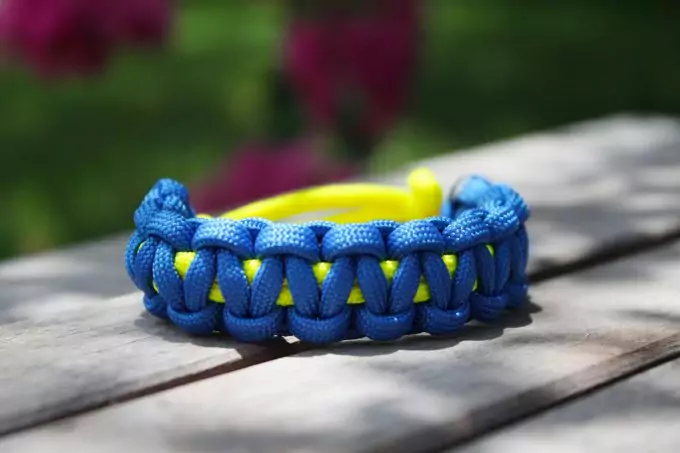
Those that are a bit craftier may even be able to devise one heck of a net. This material is incredibly strong, though you may need more than one bracelet to make anything worth using. Just keep in mind the color of your cord-baiting a net will do you little good if your cord is neon pink. We also have a very interesting piece on how to fish in a survival situation with various methods and tips which may prove useful, so make sure you don’t miss it!
Paracord bracelets are also great for hunting purposes, and the list of their applications is extensive in this category. As a hunter myself, I can’t tell you how many times a good sturdy rope has come in handy.
Just get it in black, or try not to care too much what it looks like-in my experience, no hunting rope stays blood-free for long. One of the best applications for these bracelets is no doubt for dragging out your kill. Given the tremendous amount of weight that even the thinnest of cord can support, they’re a perfect candidate for hauling that buck across the snow to your truck.
In addition, the cord’s durability makes it a great candidate for the skinning and prepping process. Run it through the hocks of a deer, find a good, sturdy rafter to hang it, and pull it up to begin the skinning process. The cord is rot-resistant too, so you can use the same one to let your meat hang when you’re done with the cleaning process.
In a survival scenario, if you need to catch yourself some dinner, and don’t have anything but your bracelet on you, even this will be enough to get you started. Again, be mindful of the color of your bracelet, and muddy it up if you need to camouflage it some. By cutting a length of it, and strategically placing what is essentially a slip knot in the brush, you can snare yourself some small game, like rabbits or squirrels.
Using a paracord bracelet for wilderness survival
If you should ever find yourself in a scenario where you’re a ways out from help, and stranded in the wilderness, a paracord bracelet can really save your skin. Depending on the supplies you have on you, there is a lot you can do with one to keep yourself safe and secure until help arrives.
One of the basics of surviving in the wild is staying warm and dry, and to do that, more often than not, you need a shelter of some kind. By unwinding your bracelet, you can string up a makeshift tent, or secure walls using wooden stakes and cord. You can even use it to weave together branches for a roof, if there’s no other canopy to get under.
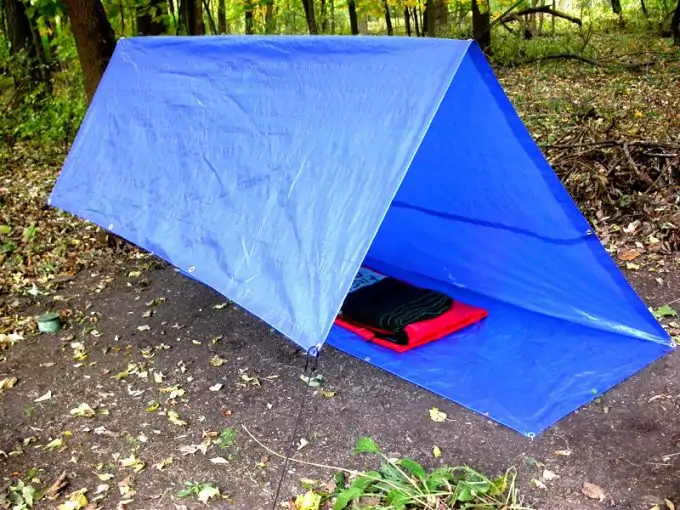
If the weather is particularly nasty, and you’re dealing with things like intense wind and rain, use your paracord to secure your waterproof clothing to your skin. It doesn’t have to look pretty-just wrap it around yourself to keep your jacket from flapping open and allowing cold air and moisture to get to you.
If you’ve ever been lost in the woods, you know what an advantage just being able to see over the tree tops can be. If you need to get a little perspective on your surroundings and climb a tree, use your paracord bracelet to rig yourself up a safety harness, so you don’t do more harm than good to your situation.
[the_ad_placement id=”in-text-3-type-r”]Speaking of trees, if you happen to be stranded out in bear country, you’ll want to be sure to suspend your food in the branches of a tree, and far away from wherever you intend to sleep. This will deter (though not always guarantee) a curious bear from ravaging your food stores, and possibly your tent.
You can even remove the outer nylon casing that makes up your cord, and use the fine inner threads for other things. These threads, fine though they may be, are still made of ultra-tough nylon, and are great for any kind of sewing you may need to do in the field (clothes, tents, even skin-yikes!). Again, like with the fishing line scenario, just pull off the threads that you need, and use a flame to melt the ends together.
If you are interested in learning more about wilderness survival, take a look at our article on survival tactics
Everyday uses for a paracord bracelet
Not every scenario is quite so dramatic-sometimes you just need a bit of rope. There are plenty of everyday situations that will make you glad you decided to wear that trendy new bit of survival gear. Having one on your wrist and one in your glove compartment isn’t the worst idea, that’s for sure.
Though it can test the limits of the weight capacity of your cord, two of these bracelets doubled up and even stand in as a tow rope, should you need to get your car a short distance. We don’t recommend relying on them exclusively-most cars weight upwards of 1,000 pounds and would strain even a double up cord. But in a pinch, use one to get your car out of a sticky spot on the side of the road, to the safety of a parking lot if nothing else.
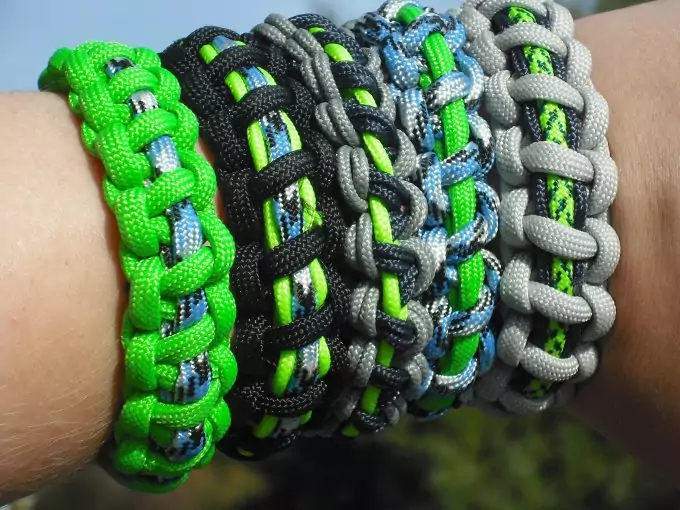
They’re particularly useful for tying down loads to the roof of your car-it seems you never know you need tie downs until you do. Speaking of tie downs, if your dog manages to snap his leash while you’re out on a run, or you notice a stray creeping dangerously close to the busy street, use your bracelet as a makeshift dog leash, until you can get home and get things sorted out.
There are countless other little applications for everyday nuances that your bracelet can help you out in. Broken shoelaces, belts, even bra straps can be mended temporarily by unwinding your bracelet (given the choice between wearing their bracelet or their pants home, most people choose pants). We also have a very well-documented piece on how to make a wide range of paracord projects that you should check out.
Never leave home without it
This is one of those little survival gadgets that you don’t know you need it, until you really need it. Save yourself some grief, and wear one every day, so you’re never in a position where you own five, but don’t have a single one on you. I get that they don’t always look great with every outfit, so ladies, get one in every color. And if that bulky clumpy bracelet just isn’t doing it for you, they make them as key chains, lanyards, dog leashes- you name it. Just have some on you in some shape or form.
It may seem like a trivial part of your prepping repertoire, but for such a small investment, it’s well worth the time and money to make it a part of your daily routine.





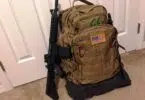
I keep two of them in my BOB. But, it can take some effort to disassemble it and use it, in an emergency this can’t be good, because most of the time we will need to act fast, and unraveling the para-cord will add more stress to the situation!
Disassembling a paracord bracelet may be difficult the first time you do it, but it gets easier with experience.
I always carry one. A paracord bracelet is useful and very easy to carry. I cannot count how many times I have unraveled and used mine.
Thank you for the comment Peter. Paracords are versatile and flexible. It is a life saver indeed.
I never thought that these bracelets would be this useful. The first aid application of moving a patient from one location to another is one to keep in mind if you find yourself in a situation like this. When you pack a survival kit you want to make it ultralight so you don’t burden yourself with heavy gear, but paracord bracelets don’t take up space and are lightweight. After understanding the uses of this bracelet I will surely equip myself with one from now on.
That’s right, John. A Paracord bracelet is a versatile survival tool that can be used for different creations, such as a fishing line, or a climbing rope. You should also try to make your own Paracord bracelet.